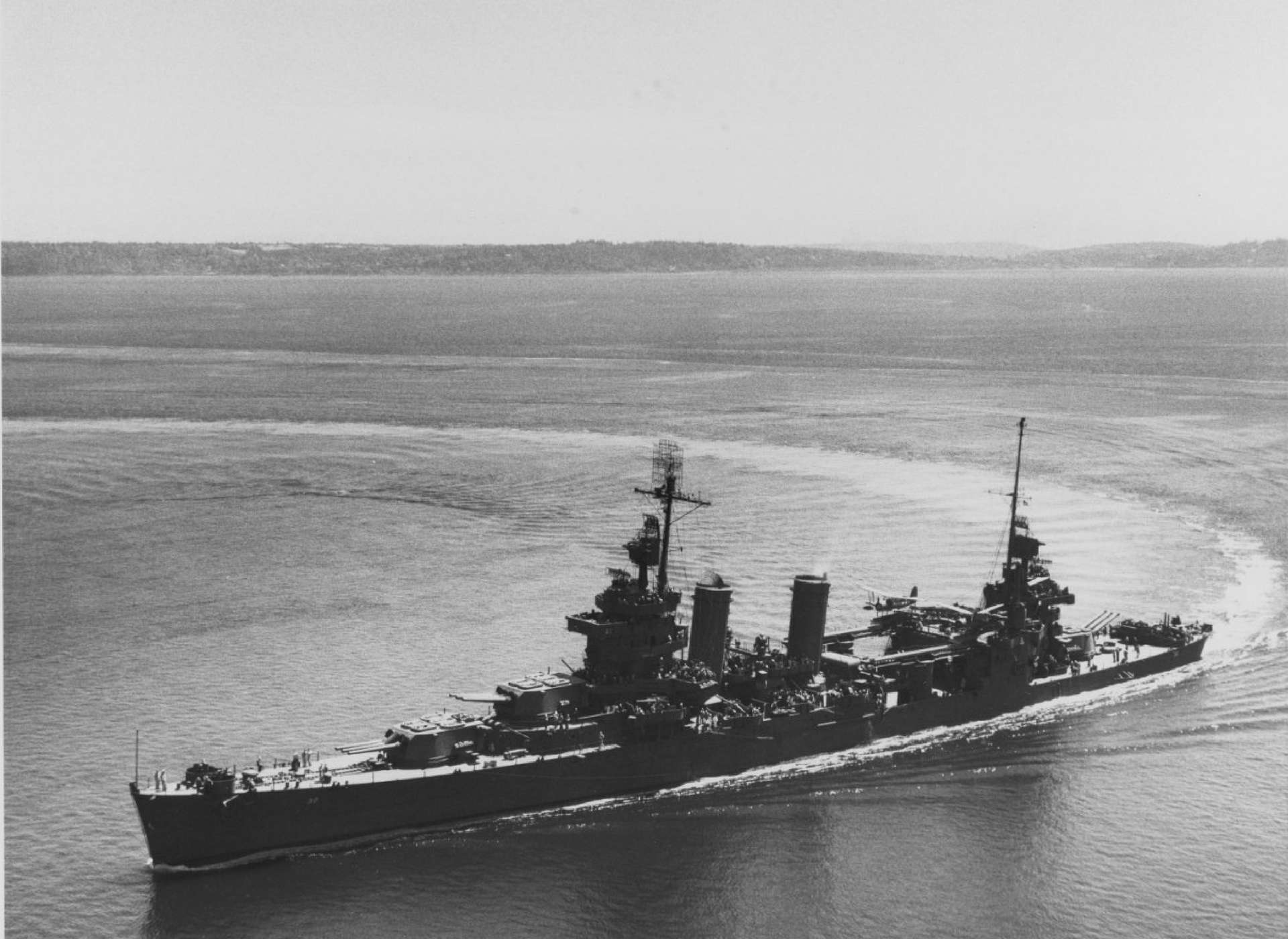Nearly eight decades ago, after being hit by a torpedo during the 1942 Battle of Tassafaronga during World War II, the crew of a US Navy warship, USS New Orleans, demonstrated remarkable resourcefulness by ingeniously repairing the warship’s damaged bow using coconut logs.
This ingenious solution allowed the ship to navigate approximately 1,800 miles in reverse, ultimately reaching the port of Sydney, Australia, ensuring its safe harbor.
On the night of November 30, 1942, a US task force found itself locked in a deadly battle with a Japanese force off the northern coast of Guadalcanal.
The American contingent, comprising four heavy cruisers, one light cruiser, and six destroyers, maintained a strategic formation with the cruisers spaced 1000 yards apart, led by Minneapolis and followed by New Orleans.
The sky, covered by thick clouds, offered no moonlight, but surface visibility was clear. The Japanese force, rumored to include destroyers and submarines, added an air of uncertainty to the situation.
#OTD in 1942, USS New Orleans was hit by a torpedo and lost her entire bow during the Battle of Tassafaronga. The crew made quick repairs with coconut logs and then sailed the cruiser in reverse for 1,800 miles to reach Sydney, Australia. pic.twitter.com/EkDsapvbY2
— U.S. Naval Institute (@NavalInstitute) December 1, 2023
At around around 11:18 p.m, Japanese destroyers launched a torpedo attack, prompting Minneapolis and New Orleans to respond with gunfire. However, within three minutes of New Orleans opening fire, chaos ensued. Two torpedoes on the port side hit Minneapolis, briefly catching fire.
Responding swiftly, New Orleans ordered a full right rudder to avoid Minneapolis. As the ship swung to the right, a deep-running torpedo struck New Orleans on the port bow just three minutes and 20 seconds after the cruiser had commenced firing.
An image recently featured in the US Naval Institute’s post vividly captures the aftermath, revealing the complete loss of the ship’s bow.
However, the source of the torpedoes remained uncertain, with suspicions pointing to destroyers, even in the presence of believed submarines.
Later, it was reported that the torpedoes hitting Minneapolis and New Orleans likely came from the same salvo, further emphasizing the intense nature of the enemy’s assault that night.
The Americans faced a defeat in that battle, losing one cruiser entirely and severely damaging three others, including the New Orleans. On the other hand, the Japanese only lost a single destroyer in the skirmish.
How Did The Crew Sail The Damaged Ship To Australia?
The torpedo inflicted severe damage on New Orleans, wreaking havoc on its forward magazines and gas tanks while also causing significant hull damage. Despite the extensive destruction, the ship managed to stay afloat and avoided complete sinking.
Faced with limited resources and remote locations near Tassafaronga Point on Guadalcanal, the resourceful crew of the New Orleans had to think fast.
Swiftly navigating to Tulagi Harbor the following day, they concealed the ship from Japanese aircraft with camouflage and, in a remarkable feat, fashioned a makeshift bow using coconut logs and foliage from the tropical surroundings.
This improvised solution enabled New Orleans to set sail, albeit in an unconventional manner. To prevent further water intake, the crew steered the ship stern first, embarking on a daunting 1,800-mile journey across the ocean in reverse, aiming for Sydney, Australia, where comprehensive repairs could be carried out.

After 11 days of preparation, the wounded ship embarked on its unprecedented voyage. The New Orleans arrived in Sydney on December 24, where it underwent extensive repairs, receiving a new bow, among other crucial fixes.
Australian workers skillfully attached a temporary bow to the USS New Orleans at the Garden Island naval base. That allowed the vessel to undertake the journey across the Pacific.
The false bow served as a temporary solution until the ship reached an American shipyard, where an entirely new permanent bow was constructed and seamlessly integrated.
According to the Naval Historical Society of Australia, the extensive repair process kept the three damaged cruisers—New Orleans, Minneapolis, and Pensacola—away from active duty for nearly a year. Only after this meticulous restoration could the cruisers rejoin the fleet, ready to resume their crucial roles in naval operations.
Having previously engaged in pivotal battles like the Coral Sea and Midway, the New Orleans continued its service, participating in vital naval conflicts such as the Battle of the Philippine Sea, Japan’s final major carrier confrontation.
Throughout the war, the ship garnered an impressive tally of 17 battle stars, a testament to its unwavering dedication and resilience in combat.
The USS New Orleans, having bravely endured the war, ultimately ended 14 years later in 1959. The ship was dismantled and scrapped at a shipyard located in Baltimore, US, marking the conclusion of its illustrious service history.
- Contact the author at ashishmichel(at)gmail.com
- Follow EurAsian Times on Google News




